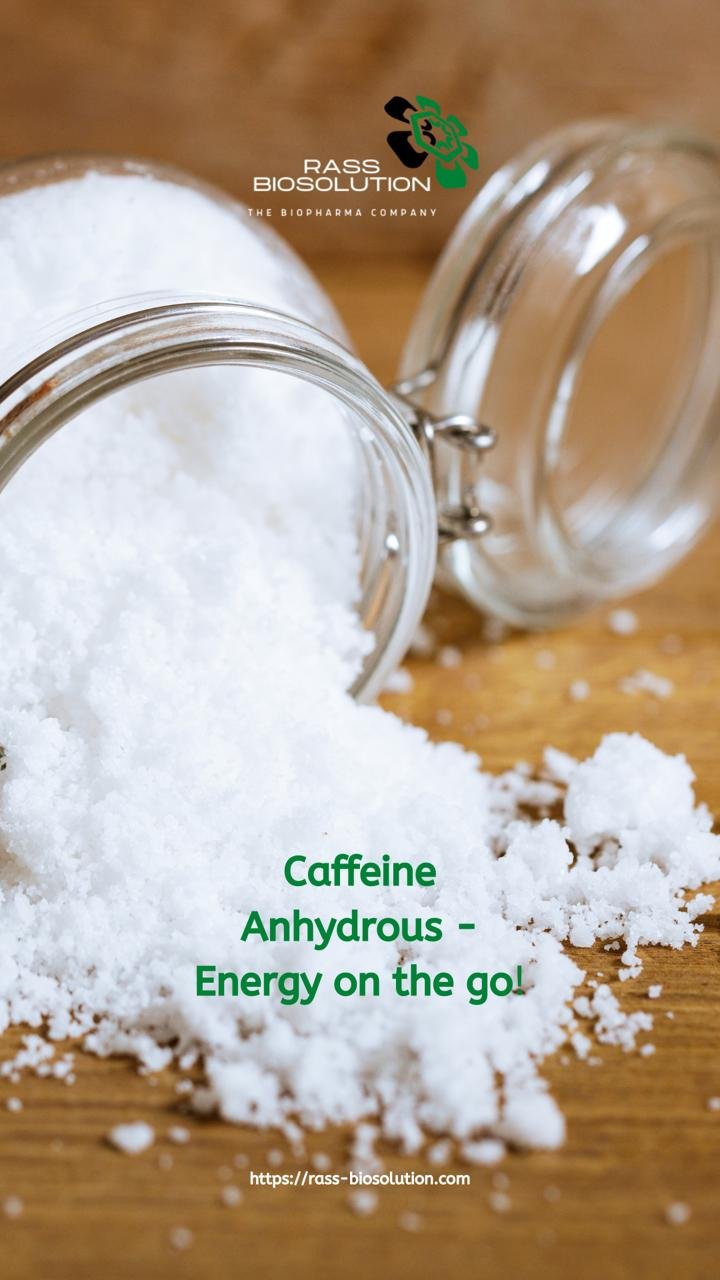Is Caffeine Anhydrous The Same As Caffeine

The jolt of energy that fuels our mornings and powers us through late nights often comes in the form of caffeine. But behind the simple label of "caffeine" lies a more complex reality, particularly when considering caffeine anhydrous. Is it truly the same as the caffeine found in coffee or tea, or does its concentrated nature pose distinct considerations for consumers?
This question is not merely academic; it has significant implications for product safety, regulatory oversight, and individual health. This article will delve into the science behind caffeine and caffeine anhydrous, exploring their similarities and differences, potential risks, and the regulations that govern their use, aiming to provide clarity on this crucial distinction.
The Science of Caffeine
Caffeine, chemically known as 1,3,7-trimethylxanthine, is a naturally occurring stimulant found in various plants, including coffee beans, tea leaves, and cacao pods. It works by blocking adenosine, a neurotransmitter that promotes relaxation and sleepiness, thereby increasing alertness and reducing fatigue.
The effects of caffeine on the body are well-documented, ranging from increased focus and energy to potential side effects such as anxiety, insomnia, and rapid heartbeat. The severity of these effects is often dose-dependent, meaning the more caffeine consumed, the greater the likelihood of experiencing adverse reactions.
What is Caffeine Anhydrous?
Caffeine anhydrous is simply caffeine from which the water has been removed. This process results in a highly concentrated powder form of caffeine, significantly more potent than the caffeine found in natural sources.
Due to its concentrated nature, caffeine anhydrous is commonly used in dietary supplements, energy drinks, and pre-workout formulas. This allows manufacturers to deliver a high dose of caffeine in a relatively small serving size.
The Key Difference: Concentration and Dosage
The fundamental difference between caffeine and caffeine anhydrous lies in their concentration. A cup of coffee, for example, might contain between 80 and 100 milligrams of caffeine, while a single teaspoon of caffeine anhydrous powder can contain upwards of 3,200 milligrams.
This extreme concentration makes accurate dosing crucial. A seemingly small miscalculation can lead to a significant overdose, with potentially dangerous consequences. The Food and Drug Administration (FDA) has cautioned against the risks associated with pure powdered caffeine products due to the difficulty in measuring safe doses.
Furthermore, the rapid absorption rate of caffeine anhydrous can lead to a more intense and potentially overwhelming effect compared to caffeine from natural sources, which is absorbed more slowly.
Potential Risks and Side Effects
While caffeine, in moderation, is generally considered safe for most adults, caffeine anhydrous poses a greater risk of adverse effects due to its concentrated form. Overconsumption can lead to a range of symptoms, including heart palpitations, tremors, nausea, vomiting, and even seizures.
In severe cases, caffeine overdose can be fatal. Several incidents have been reported where individuals have unintentionally consumed excessive amounts of caffeine anhydrous, resulting in hospitalization and, tragically, death.
Individuals with pre-existing heart conditions, anxiety disorders, or sensitivities to stimulants are particularly vulnerable to the negative effects of caffeine anhydrous. It is crucial to consult with a healthcare professional before using products containing this substance.
Regulatory Landscape and Consumer Awareness
The FDA regulates caffeine as a food additive and requires manufacturers to list caffeine content on product labels. However, the regulations surrounding caffeine anhydrous are less stringent in some areas, particularly regarding dietary supplements.
Due to growing concerns about the potential risks, the FDA has issued warnings about pure powdered caffeine products and has taken steps to increase consumer awareness. Education is key to ensuring that individuals understand the potency of caffeine anhydrous and take appropriate precautions.
Consumers should always carefully read product labels, pay attention to serving sizes, and be aware of the caffeine content in all products they consume. Using measuring tools like scales instead of spoons when dealing with powdered forms of caffeine can also help to ensure a safe dosage.
Expert Opinions and Research
Numerous studies have examined the effects of caffeine and caffeine anhydrous on the body. Researchers at institutions like the National Institutes of Health (NIH) have conducted extensive research on the metabolism, safety, and efficacy of caffeine.
Experts in toxicology and pharmacology emphasize the importance of responsible caffeine consumption and caution against the use of highly concentrated forms like caffeine anhydrous without proper knowledge and guidance. They also highlight the need for stronger regulations and stricter labeling requirements to protect consumers.
"The risk with caffeine anhydrous is not the caffeine itself, but the difficulty in accurately measuring small doses," says Dr. Emily Carter, a toxicologist at the University of California, San Francisco. "Consumers need to be aware of the potency and exercise extreme caution."
The Future of Caffeine Regulation
The debate surrounding caffeine anhydrous is ongoing, with stakeholders advocating for increased regulatory oversight to prevent adverse events. Proposals include stricter labeling requirements, dosage limits, and age restrictions on the sale of products containing concentrated caffeine.
The FDA is actively monitoring the market and considering further action to address the risks associated with caffeine anhydrous. Public awareness campaigns and educational initiatives are also crucial in empowering consumers to make informed decisions about their caffeine intake.
Ultimately, whether it's from a cup of coffee or a dietary supplement, understanding the effects of caffeine on your body and knowing your limits is key to enjoying its benefits without compromising your health. While caffeine and caffeine anhydrous share the same chemical composition, their concentration and mode of consumption dramatically alter the risk profile. Informed choices are essential in navigating the world of stimulants and protecting your well-being.


















